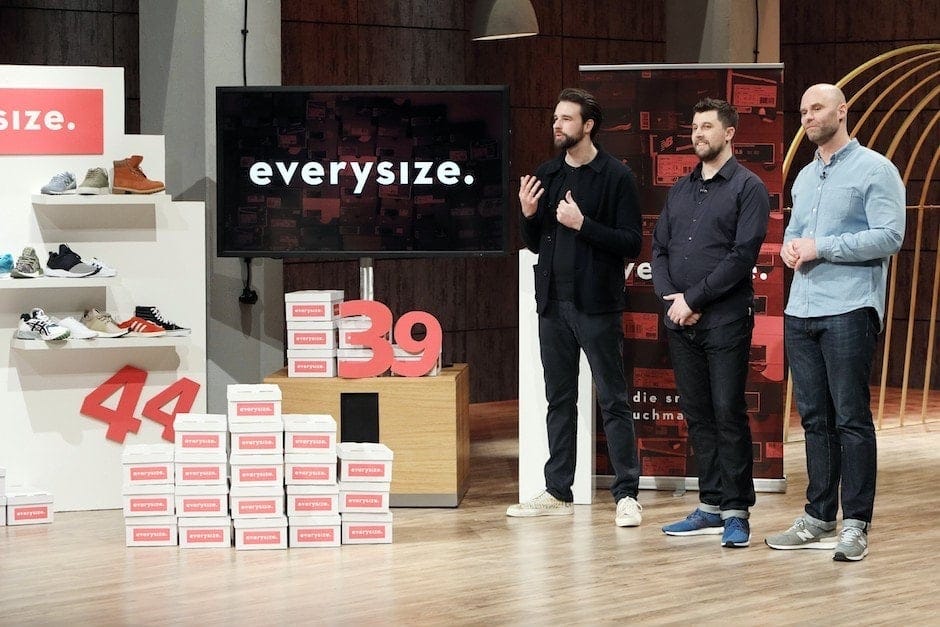From Passion to Business: How Eugen Falkenstein Built Everysize Without External Funding
Welcome to the second issue of the “Happy Boostrapping” Newsletter - the story of this episode goes a way back and was the initial Episode #1 in December 2022.
In the first episode of the "Happy Bootstrapping" podcast, Eugen Falkenstein shared the remarkable journey of Everysize, a sneaker search engine and price comparison platform founded in 2015. As a self-taught developer with roots in industrial management, Eugen combined his technical skills with his brother's sneaker expertise to solve a common problem: finding sneakers in the right size at the best price.
In the monday edition you’ll receive an older story, starting from Episode 1 of the podcast - on thursday you’ll find a brand new and recent episode.
The Birth of a Bootstrapped Startup
Everysize was born from a personal pain point. Both Eugen and his brother have large feet (EU size 47/48), making it extremely difficult to find suitable sneakers. The online shopping experience for shoes was frustrating - you'd find a sneaker you liked, but then had to check manually if your size was available.
"The whole online retail sector, when it comes to sizes, has essentially just adapted the offline retail experience," Eugen explains. "Find a shoe, check if the price is right, then check if your size is available. If not, start all over again. It's tedious, especially if you have feet at the extreme ends of the size range."
The three founders started with just €30,000 of their own money and formed a UG (entrepreneurial company with limited liability). Eugen contributed his development skills rather than cash, while the other co-founders brought industry connections and marketing expertise.
A Size-First Business Model
Everysize's core business model is affiliate marketing. When users find a sneaker on their platform and click through to a retailer, Everysize earns a commission on that click - not on the eventual purchase. This model began generating revenue almost immediately, though initially at a small scale.
After seven years, the platform now features approximately:
60 retailers
40,000 products
100 brands
The company remains lean with 6 full-time employees and about 9 additional external collaborators.
Marketing Challenges and Appearance on "Die Höhle der Löwen"
A significant milestone for Everysize was appearing on the German TV show "Die Höhle der Löwen" (similar to Shark Tank or Dragon's Den) in 2017. While they didn't secure investment, the exposure was tremendous.
"We had about 110,000 visitors simultaneously on our site during the broadcast," Eugen recalls. "We had to completely rebuild our architecture to handle this traffic. It was touch and go whether we'd survive the traffic spike."
The experience validated their product-market fit, even though they were presented somewhat unfavorably on the show. The appearance also highlighted a key bootstrapping challenge: having to choose between investing in marketing or technical infrastructure with limited resources.
Today, their traffic comes from three main sources:
Search (SEO and paid)
Social media
Brand awareness efforts
Key Lessons for Bootstrappers
Eugen shared three essential tips for fellow bootstrappers:
Ensure you have a viable business model - Know how and if you can make money with your product before you start.
Watch every penny - "Really turn every cent over twice because typically you start with just a few thousand or maybe €10,000. Be prepared not to take a salary at the beginning."
Avoid perfectionism - "You'll never reach 100% perfection. Start with 30% of the functionality, see if it works, and if it does, be quick to build the other 50%."
"We made countless mistakes," Eugen admits. "The difference when bootstrapping is that you're forced to react quickly. You can't sit out these mistakes because otherwise, costs get out of control."
Conclusion
Eugen was the first person I interviewed, and I continue to learn a lot from him every day. He embraces a "spaghetti code" approach, where he rapidly tests new ideas without lengthy development cycles. When a feature proves successful, he rebuilds it properly; if not, he simply discards it. This methodology enables his team to move much faster than competitors in their market niche.
Personally, I'm still waiting for EverySize to expand into jeans and other clothing categories that face the same search challenges as shoes.
Did you enjoy the episode?
Please let me know if you have any questions or feedback - thanks!




